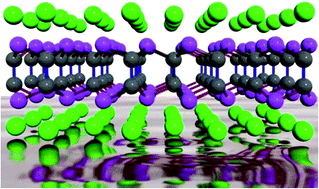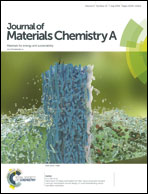Two-dimensional phosphorus carbide as a promising anode material for lithium-ion batteries†
Abstract
Monolayer two-dimensional phosphorus carbide (γ-PC) has been intensively studied as a promising anode material for lithium-ion batteries with first-principles calculations. The results show that the monolayer γ-PC semiconductor with a direct band gap of 2.653 eV possesses excellent structural stability and deformation-resistant ability. Besides, monolayer γ-PC is also predicted to show ultrahigh conductivity. Each adsorbed Li atom binds strongly with three neighboring phosphorus atoms. The average adsorption energy of Li atoms reaches up to −1.2 eV, which is beneficial for the charging and the discharging process. Additionally, the diffusion barrier of Li can be as low as 77 meV, which is likely to greatly improve the performance of batteries. We further demonstrate that the theoretical specific capacity of monolayer γ-PC is high, up to 623.3 mA h g−1, which makes it a promising anode material for lithium-ion batteries.



 Please wait while we load your content...
Please wait while we load your content...